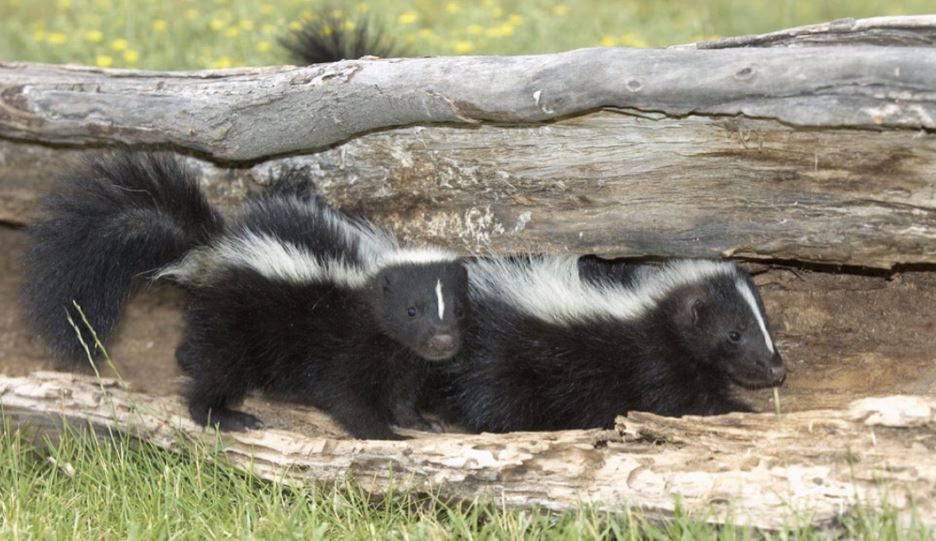About Skunk: Appearance, biology, life cycle, habitat, diet, behavior

Skunk is an animal from weasel family with predominantly white and black color. It is a wild animal notorious for the ability to release odorous liquid from the anus mostly as defense action when feel threatened. The odorous or foul-smelling liquid ejected from the anal glad is enough to make the predators including human feel uncomfortable around it. So, if you do not want to worry about fuel smelling odor on your body for some days you should not even bother chasing after Skunk very closely.
Appearance
There are various species of skunks and all of them differ from one species to another considerable in various ways including in body size and others. The body size of skunk is measured ranging from 15.6 up to 37 long, with the weight measured about 1.1 lb. Furthermore, in general skunk has somewhat elongated body as well as well-muscled short legs and front claws used mainly for digging holes and searching for food on the ground. It is true the white and black skunks are dominated other colors, it is not difficult for one to still find some grey, creamed or even brown skunks. They are usually born with stripped white color on them.
Biology and life cycle
When you hear to world polygamous you what will come to your mind will a human man getting married to more than one wife. But, that is not just restricted to human man as skunks also practice the same thing. They are said to be naturally polygamous and usually mate at the early time of the spring. The female skunks after mating with male usually go on ground excavation in order to construct a den where the babies will lay and that usually happen in May. The gestation period for the female is always 66 days and normally gives birth to about 4 or 7 kits. The newly born baby skunks are always blind due to the fact that the eyes are usually covered with some layer fur that is soft in nature. They are also born deaf, with their eyes opening about three weeks from birth. The mother skunks usually wean the babies after or within two months. After being weaned the babies are allowed to stay with their mother for about a year, which is their maturity age for mating.
Habitat
Skunks in region with extreme cold, usually come together to produce heat for themselves using their body. They usually live inside on the ground and always remain there throughout the winter period. Also, if there is any burrows of other animals around, they will be glad to live inside there.
Diet
Skunks feed on both plant and animals which made them to be known as omnivorous animals. Their foods are always determined by the season of the years as they have tendency to change diet base on whet is available. Some of the things they eat include: lizard, insets, birds, grubs, small rodents, snakes, salamanders and frogs.
Behavior
The baby skunks are usually protected from their mothers who are always aggressive when with babies around. Also, skunks normally like a solitary lifestyle, except the breeding time. Male skunks do not always have hand in the upbringing of their young ones.
Go back to the Noises in the Attic home page.

